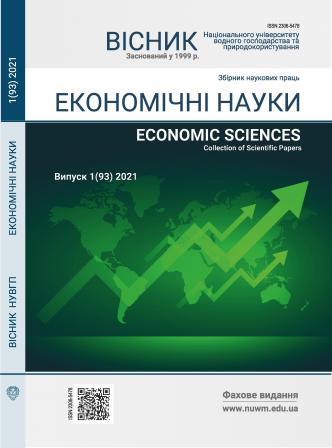CURRENT TRENDS IN THE INTERNATIONAL TRANSFER OF INNOVATIVE TECHNOLOGIES
DOI:
https://doi.org/10.31713/ve120213Keywords:
innovative technologies, transnational companies, innovation strategy, international transfer, venture enterprises.Abstract
The article considers current trends in the international transfer of innovative technologies. It has been proven that at the international level, multinational companies are stimulators of immigration processes, distributors of the latest information technologies. They are the core of global innovation, which determines the pace and direction of development of the world market. Today, in the global innovation market, multinational corporations operate in a dynamic, aggressive and multifaceted competitive environment. It is important to note that scientists distinguish three fundamental models of innovation systems, both at the enterprise level and at the state level: American, European and Asian.Unlike multinational companies in the United States and the European Union, Japanese multinational companies are characterized by gradual integration into the country where their foreign research laboratories are located in order to gradually prepare for production in the host country.Moreover, any preliminary stages are only a preparation for future production. Transnational companies in the United States and the European Union are characterized by the gradual transformation of research laboratories from fully dependent (relative to the parent company) to relatively independent laboratories, which only rely on the parent laboratory for some innovative product orders.The above differences in the characteristics of innovation developmentmodels in the United States, Europe and Asia indicate the unique competitiveadvantages of multinational companies.It has been established that the sphere of innovation is increasingly attracting the attention of multinational companies, as it has the most important competitive advantage, which has long-term consequences for markets and countries around the world. It is noted that the formulated strategy of innovation can shape the technological policy of a multinational company in accordance with the market position and objectives of its development. In fact, the technology policy of a multinational company is determined by many factors, and its implementation involves the interaction of participants with different and sometimes even opposing interests.References
Губайдуллина Ф. С. Крупные транснациональные корпорации на новых рынках. ЭКО. 2007. № 3. С. 20–33.
Ляшенко О. М. Моделі комерціалізації та трансферу технологій в умовах глобального середовища : монографія. Тернопіль : Економічна думка. 2007. 366 с.
Ляшенко О. Підхід до дослідження впливу структури галузевого ринку на інноваційну активність підприємств. Актуальні проблеми економіки. 2010. В. 4. С. 17–24.
Нагачевська Т. В. Cучасні тенденції міжнародного трансферу технологій та перспективи України. URL: nbuv.gov.ua (дата звернення: 10.01.2021).
Чуйко О. Науково-теоретичні основи інновацій та інноваційного процесу: сутність, види, еволюція. Економіка. 2008. № 2. С. 7–13.
Шумпетер Й. Теория экономического развития. М. : Прогресс, 1982. 455 с.
Freeman C. As Time Goes By. From the Industrial Revolutions to the Information Revolution. Oxford: Oxford University Press, 2001.
Kleinknecht A. Innovation patterns in crisis and prosperity: Schumpeter’s long cyrcle reconsidered. Hong Kong, 1987. 203 p.
Mensh G. Stalemate іn technology: innovation overcome the depression. Cambrige (Mass). 1979. 714 р.

